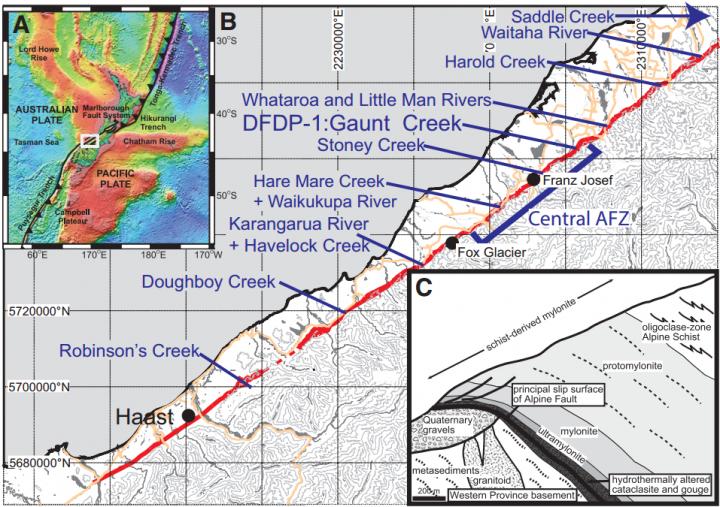Rocks within plate boundary scale fault zones become fragmented and altered over the earthquake cycle. They both record and influence the earthquake process. In this new open-access study published in Lithosphere on 4 Feb., Virginia Toy and colleagues document fault rocks surrounding New Zealand's active Alpine Fault, which has very high probability of generating a magnitude 8 or greater earthquake in the near future.
Descriptions already suggest that the complex fault rock sequence results from slip at varying rates during multiple past earthquakes, and even sometimes during aseismic slip. They also characterize this fault before rupture; Toy and colleagues anticipate that repeat observations after the next event will provide a previously undescribed link between changes in fault rocks and the ground shaking response. They write that in the future this sort of data might allow realistic ground shaking predictions based on observations of other "dormant" faults.
Figure 1 is a Location map. (A) Key tectonic elements of the Pacific-Australian plate boundary, including the Alpine fault through the continental South Island of New Zealand. Credit: V. Toy et al., and Lithosphere

Citation: Fault rock lithologies and architecture of the central Alpine Fault, New Zealand, revealed by DFDP-1 drilling, V.G. Toy et al., 4 Feb. 2015; doi:org/10.1130/L395.1 (http://dx.doi.org/10.1130/L395.1)